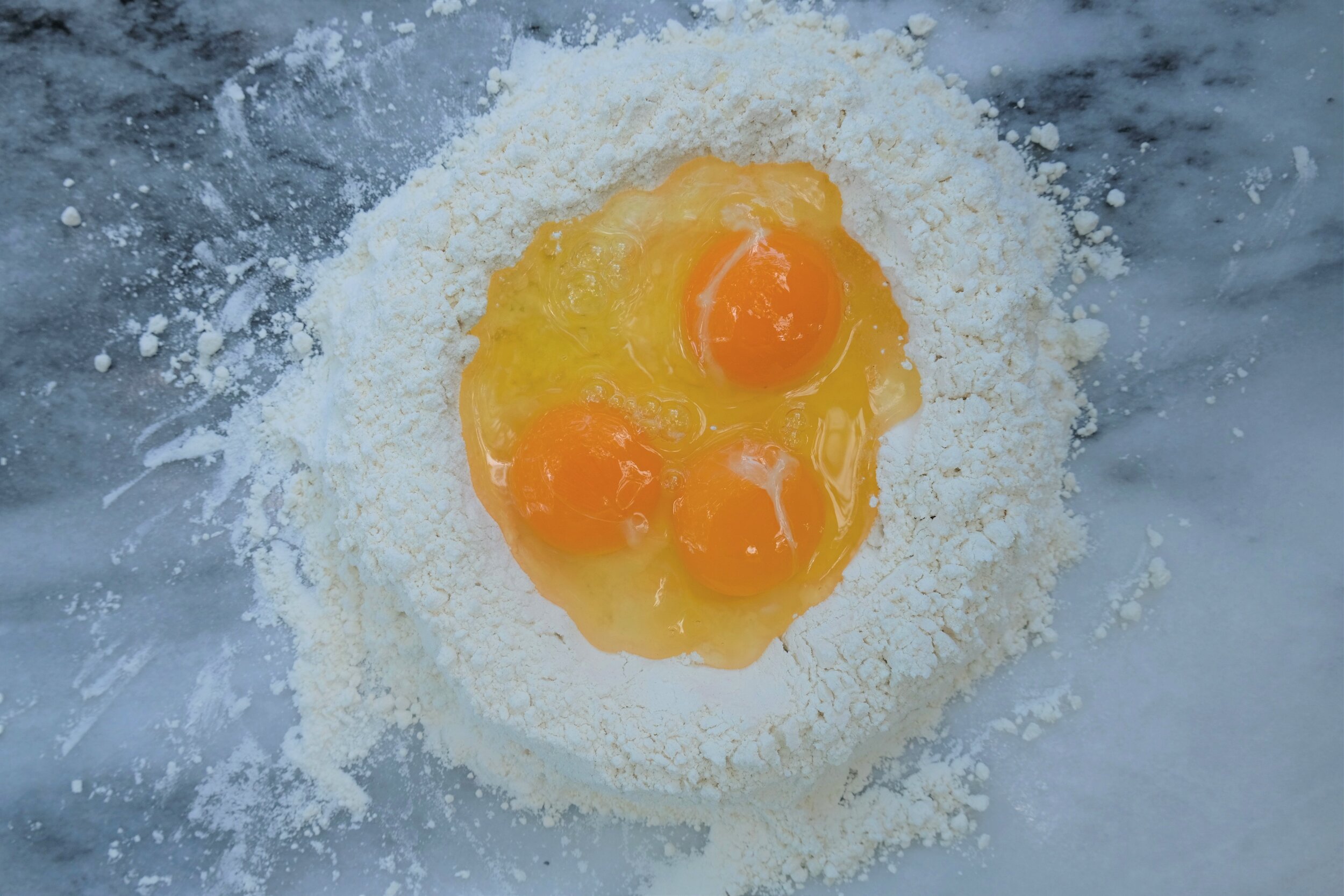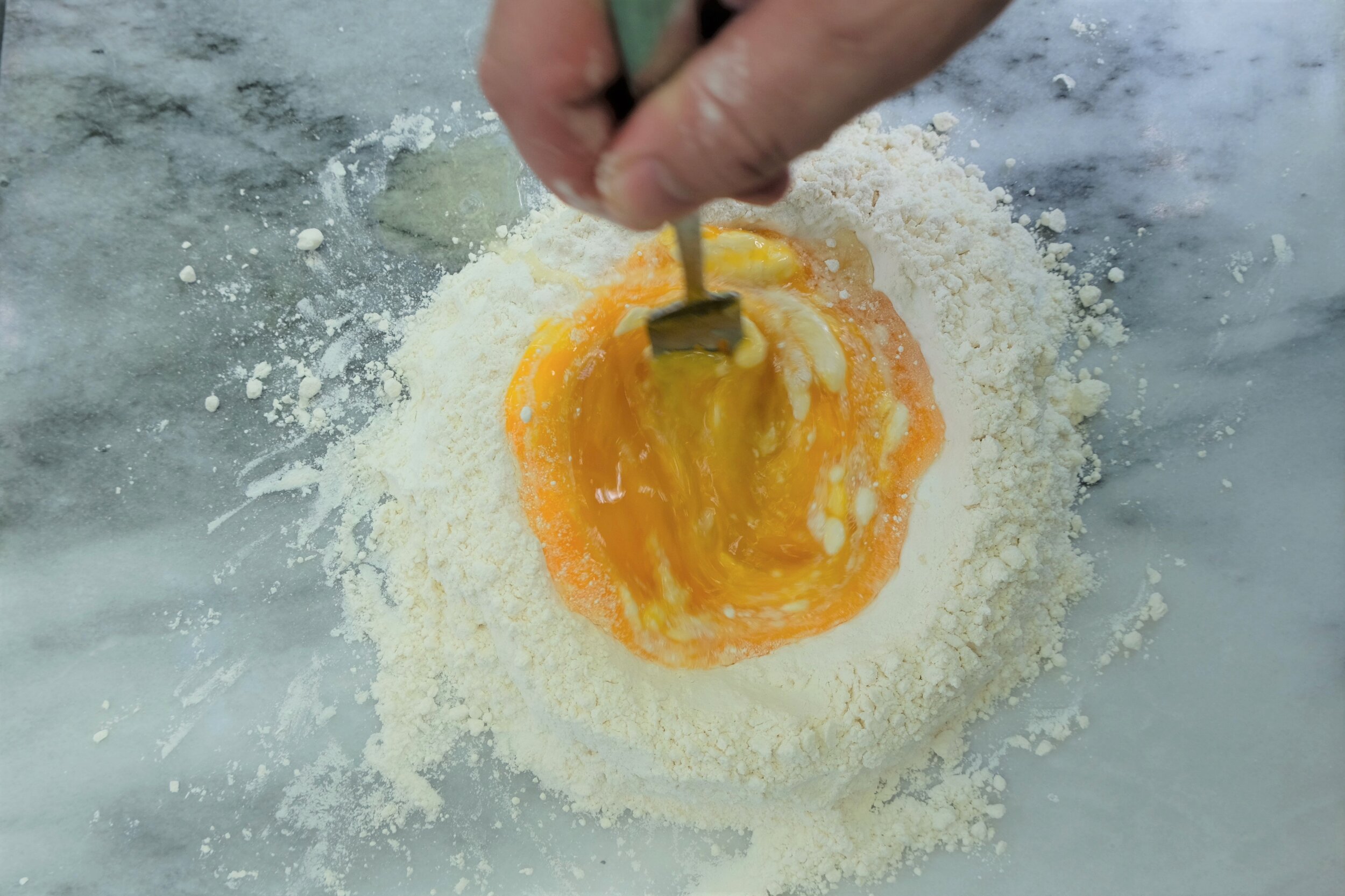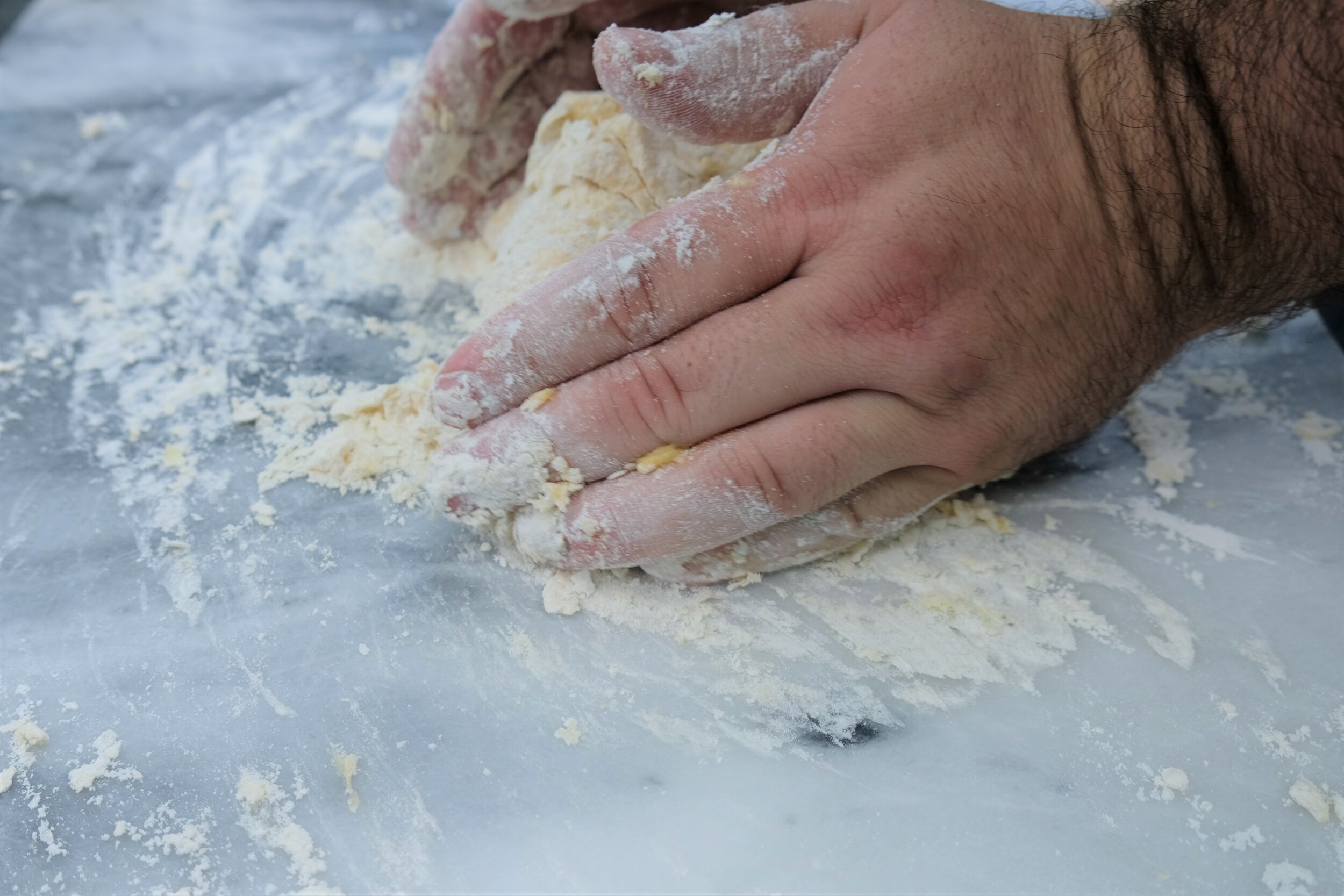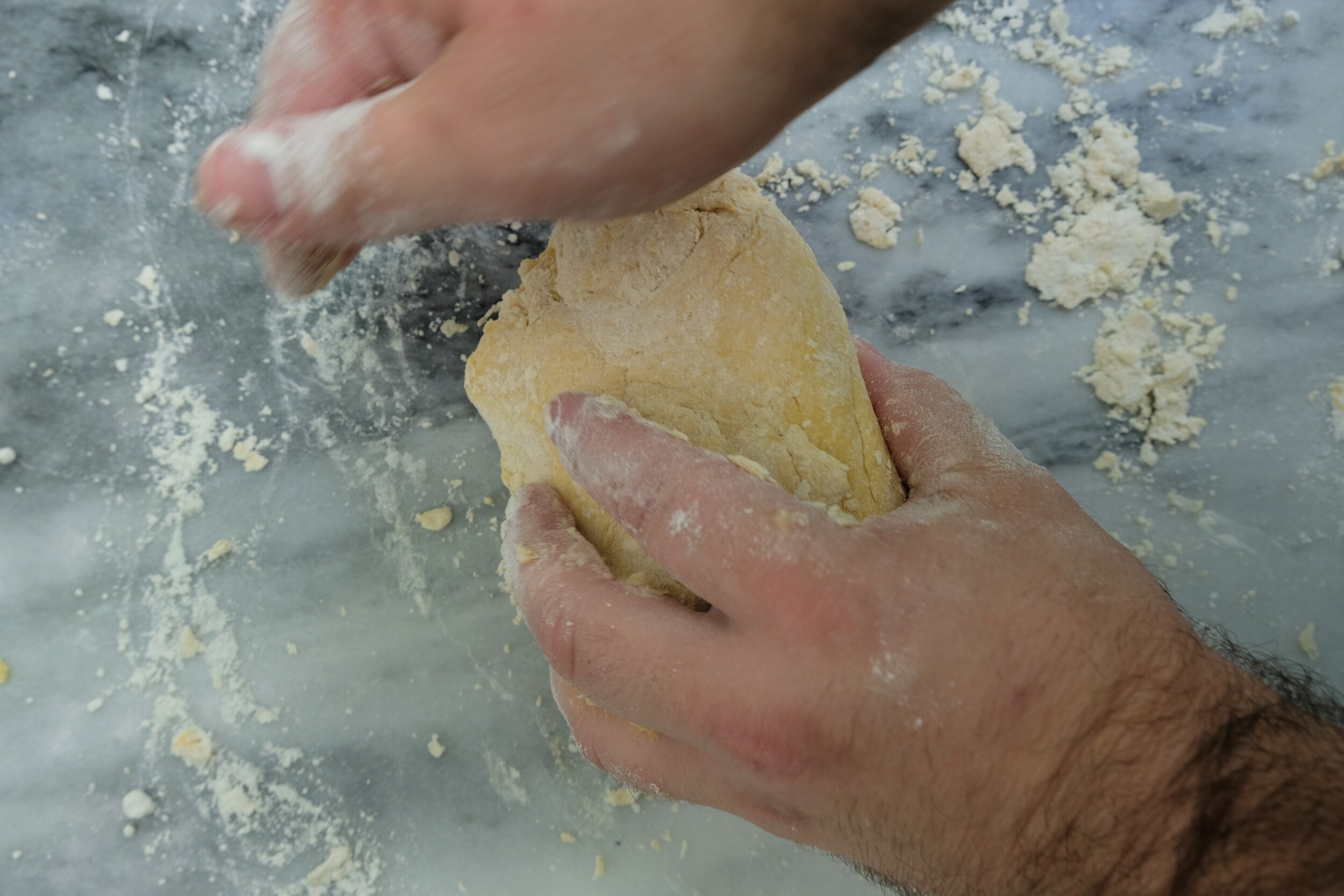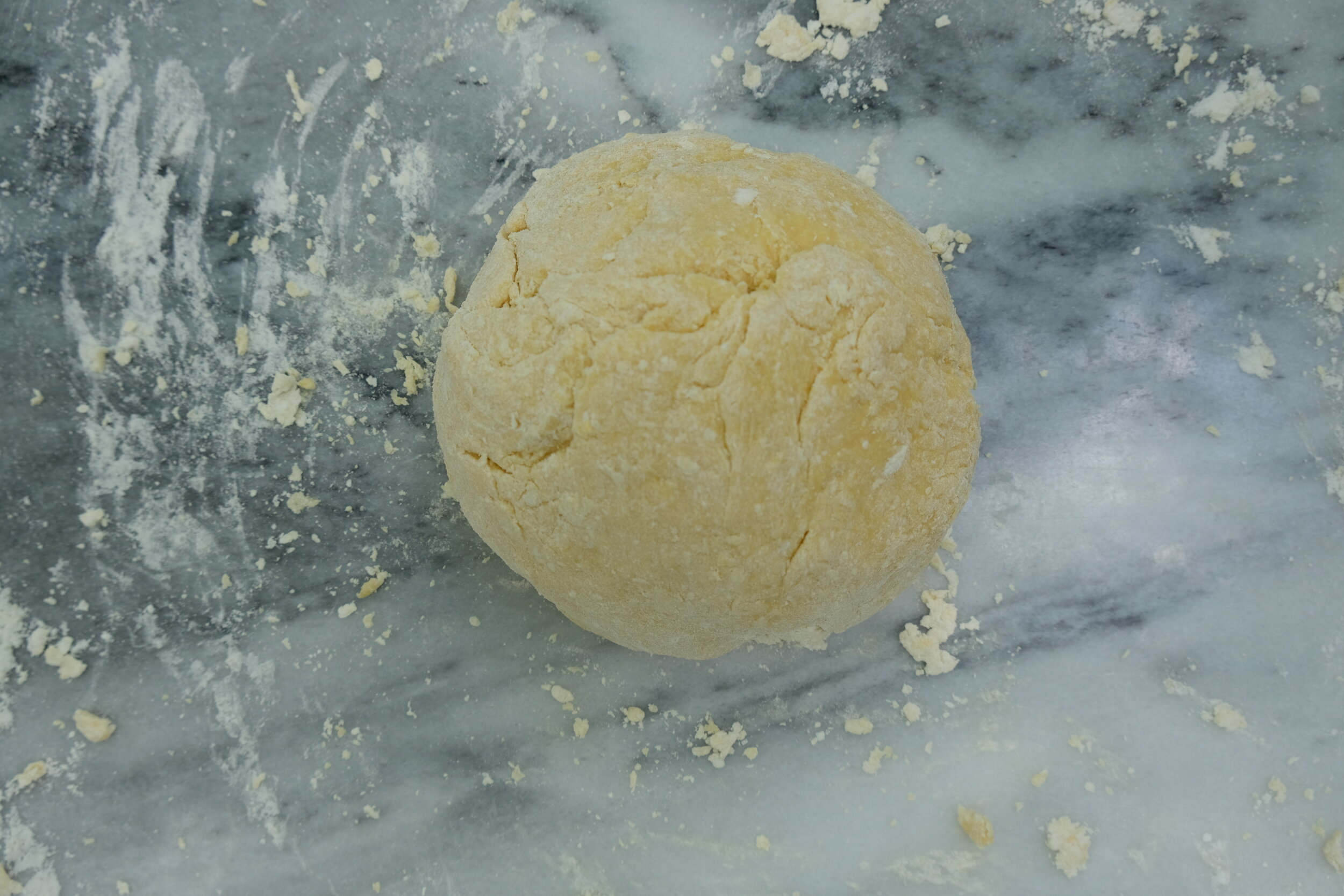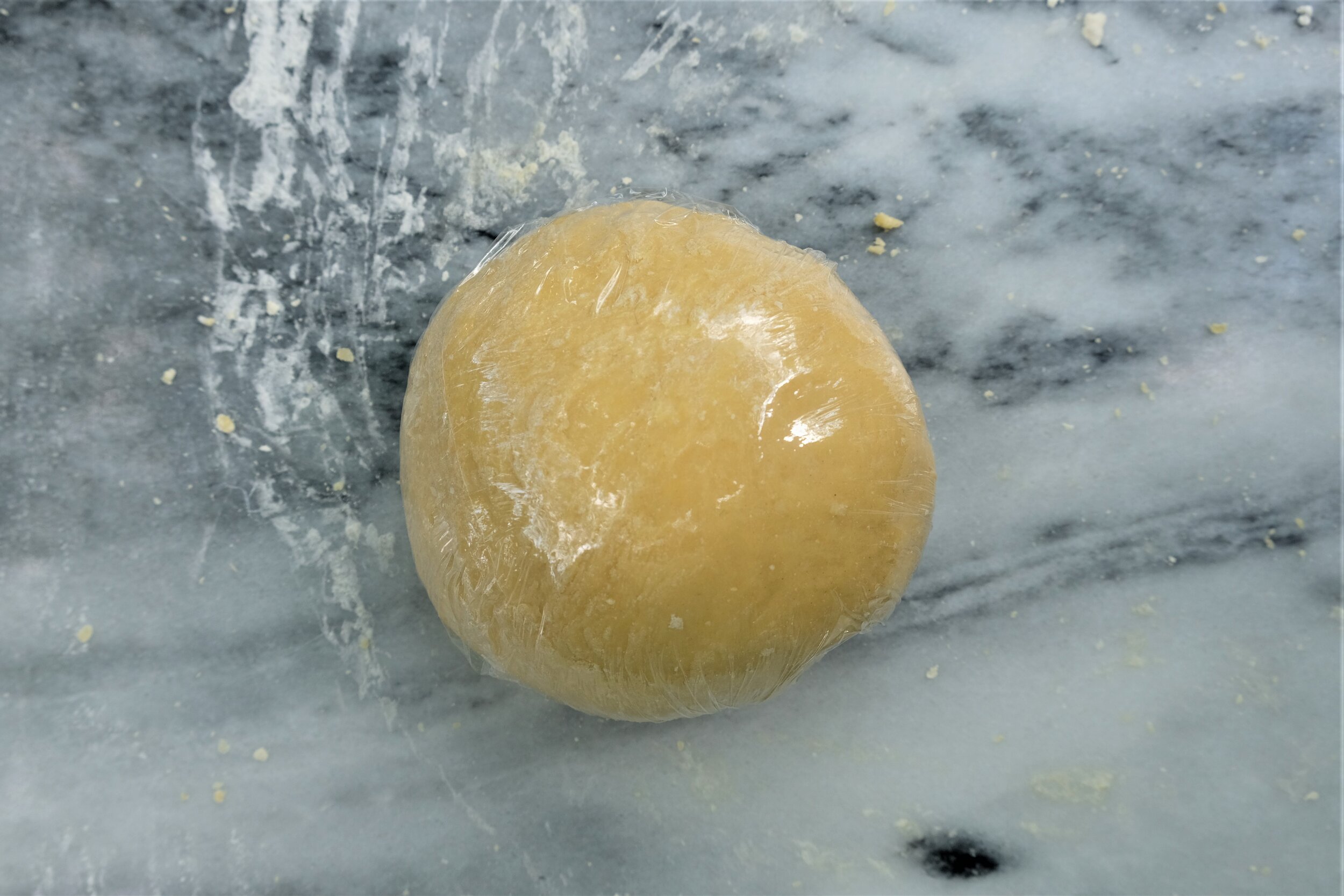Making Perfect Pasta
*As an Amazon Associate I earn from qualifying purchases.
PASTA! Just saying the word invokes some powerful memories for many, whether it’s Sunday afternoons with your Nona’s “gravy”, your favorite restaurant, or that first time you made a perfect noodle. For me pasta has always held a very special place in my heart, and my stomach. I have always loved eating pasta, and a few years ago I fell in love with making pasta. l have been very excited to write about this because, to me, there is nothing like fresh pasta whether it’s covered in a red sauce, bolognese, carbonara, or a simple butter sauce. With that said my goal here today is to demystify the art of pasta making so that everyone can feel confident making pasta at home.
Now in order to make pasta at home with my method here, you will need a pasta roller. But no worries they are pretty easy to come by and not very expensive at all to start. If your brand new to pasta making or you only want to make pasta on limited or special occasions, a hand crank pasta roller is perfect for you. I would recommend one from Marcato as they are really the gold standard in hand powered pasta rollers. If you have a KitchenAid I would suggest using the attachment roller 3-piece set (which is what I use at home, and in this video). I find it easier to have the free hand that the machine powered roller gives me. No matter if your using a hand crank or electric powered kit either of these rollers will help make pasta making a snap.
Pasta in the south:
From 1880 to 1924 over 4 million Italians (mostly from the southern regions of Italy) migrated to the US. While the majority of those immigrants settled between New York and Boston, some made their way south with the hopes of jobs in mills and farms. As these immigrants settled across the US they brought with them the knowledge and skills to make pasta, and with wheat being plentiful the US was ready for the great pasta invasion. It didn’t take long before non-Italian Americans realized how delicious, versatile, and most importantly affordable pasta was. Dried pasta became a common pantry staple across the country. Currently in the south, chefs like Andrew Ticer and Michael Hudman (who have teamed up to create amazing restaurants like Hog & Hominy in Memphis, and Josephine Estelle in New Orleans) blend their family’s Italian roots with the southern cooking they were raised on. If you want to explore their unique perspective on cooking further, I suggest their book Collards & Carbonara which has been very influential in my cooking.
Quick side note on this recipe:
There are hundreds of pasta recipes out there and each serve their own purposes. When I first started making pasta, I had no idea there were so many different recipes, and how important it was to select the proper dough recipe based off the type of pasta you wish to make.
I chose this particular recipe to share with you because its versatile, tasty, and easy to remember. This recipe follows the ratio of 1 large egg + 100 g flour =1 serving of pasta. So as long as you can remember that ratio you will always have a great go to pasta recipe in your back pocket.
Photo by Linsey Sowa
Here is what you need: (Serves 3 as a main)
3 large eggs
300 grams “00” flour (I prefer King Arthur)
Pasta Roller
Large pot of boiling water
Salt
Let’s make some pasta:
Turn your flour out onto a clean work surface and form a large well in the center.
Add your eggs and begin to incorporate them into the flour with a fork or by hand ensuring you keep the walls of your flour well intact initially so egg doesn’t run all over (I’m speaking from experience on this one).
When the egg and flour begins to come together into a shaggy consistency you can stop swirling with the fork and begin to push the flour together into a loose pile.
With your hands mix the dough together until it forms a rough pliable mass and begin to knead the dough ball.
Continue to knead the dough ball by pushing it forward with the palm of your hand and then pulling back and turning it over on itself with your fingers. Rotate a quarter turn and continue.
When the dough has completely come together it should be soft but have a firmness to it (you should be able to make a small indent with your finger and it holds its shape), and be uniform in color.
Wrap your dough ball tightly in cling wrap and let rest at room temp for 1-2 hours.
Photo by Linsey Sowa
Photo by Linsey Sowa
We have a dough ball, now what!!
*This is where you can turn your dough into whatever style pasta you like. The following are the steps I use for fettuccine.
Prepare your pasta roller using the sheeter attachment (if your using a crank machine this is the base unit), and ensure it is on the number 1 setting.
Get your stock pot of water over high heat and add enough salt so that the water tastes like the ocean (seriously, taste your water and if it doesn’t taste like the ocean add more salt).
After your dough has rested divide it with a bench scraper into 4-5 even sized pieces. Keeping one out wrap the others back up in the cling wrap or a moist kitchen towel to keep them from drying out.
With your hand flatten out the 1st piece of your pasta dough into a rough square and pass that through your pasta roller.
Fold this over lengthwise into overlapping thirds and run it through on the number 1 setting again. Repeat this step one more time.
Turn your roller to number 2 setting and pass your pasta dough through a single time. Repeat this step going up one setting each time until you reach your desired thickness. For fettuccine I usually go to the 4 or 5 setting. (If at any time the pasta starts to get sticky you can gently cover it with some extra flour)
Once your dough sheet is at its desire thickness lay flat on a flour dusted work surface and cover with a clean kitchen towel.
Repeat steps 4-7 with your remaining dough.
After all your dough has been sheeted attach your fettuccine roller and feed your pasta sheets one at a time until all your pasta is made.
Pro tip: Use a flour dusted sheet tray to catch all of your pasta as it comes out of the roller.
Toss all of your pasta noodles together with some flour and cover with a clean kitchen towel until the water comes to a boil.
Add your pasta to the boiling water and cook for 2-3 minutes until al dente, remove for the water and serve with your favorite sauce.
Remember the pasta will continue to cook when you pull it from the water and if you add it to a hot sauce, so it’s better to be a little under done that over cooked.



